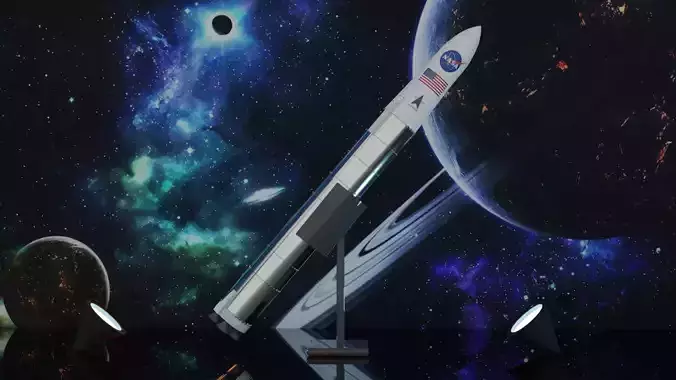1/3
A beautifully desgined rocket by Astra, 3D modelled in Blender as a replica. I did my very best in order to come up with a final product with a high level of accuracy and precision and so I did. Included with a beautiful imagery of the galaxy as it's background.
A little background:
Astra is a small satellite launch vehicle designed by Astra Space Inc, formerly known as Ventions Inc. Reportedly this is a small orbital launch vehicle capable of delivering about 100 kg to low earth orbit.
This vehicle likely builds on the experience gained by developing the air-launched SALVO launch vehicle, although it did not perform any launches. It is fueled by Kerosene and liquid oxygen (LOX). The first stage of Astra is powered by five Delphin engines of 28 kN thrust each driven by battery-powered pumps, the second stage uses an engine called Aether. It uses a minimum ground infrastructure, which can be set up in short term at different launch sites.
The rocket was spotted on a video in February 2018 apparently doing ground tests at Alameda Naval Air Station.
The company is the customer for a secretive Rocket 1 suborbital launch at Pacific Spaceport Complex Alaska (PSCA) on Kodiak Island in 2018. The first suborbital test flight occured on 21 July 2018 with failure shortly after launch.
The second suborbital flight in November 2018 also failed shortly after launch and fell near the launch pad, after all five engines failed.
The first orbital version, Rocket-3.0 is a two stage vehicle. Stage one apparently uses a common bulkhead design, contrary to the two prototypes. It has a diameter of 1.32 m and a height of 11.6 m. Three vehicles are built of this initial version for flight tests, before producing improved versions.
The maiden orbital flight in March 2020 was to carry payloads for the DARPA Launch Challenge (Prometheus 2.10, ARCE 1A, 1B 1C, SOARS), but as the flight was not able to lift off during the launch window of the challenge, the payloads were returned to the owners. Another attempt to launch the rocket later in March 2020 resulted in the destruction of the vehicle during a wet dress rehearsal (unclear, if a payload was on board). Further launch attempts later in 2020 will use the two remaining rockets. On the first of these attempts called Rocket-3.1 no actual payload was flown and only stage two was planned to reach orbit. It failed about 30 seconds into the flight and impacted near the launch site.
The launch vehicle does not require a fixed launch infrastructure, as all of these components are transportable by air lift and can be set up at any clean-pad launch site.
REVIEWS & COMMENTS
accuracy, and usability.



